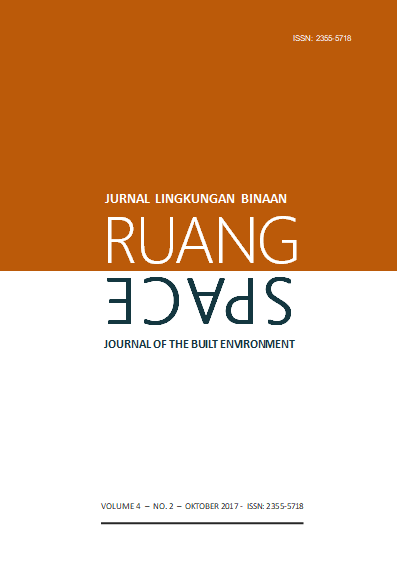Editorial: Sustainability and Development
Abstract
This is a continuation of my writing published in previous Ruang-Space Journal of Volume 4, No. 1, April 2017.
When we link the word sustainable and development the water becomes muddy. As a general rule, when sustainable development is referred to, what is implicit is the sustainability of the capitalist world system, not the sustainable livelihood of its population or of nature. By itself, development is a liberal term, obscuring the so-called ‘issues’ of capitalist imperialism, class division and the creation of what can only be called the dispossessed who experience actually existing capitalism as ‘nothing short of savagery’(Amin). In the Global South, food aid is its lowest in 20 years, with the UN trying to feed one billion hungry people on $USD 1.40 a day. Of the $US 5 billion promised to the U.N. by the wealthy nations, only half was delivered in 2009. It means to cut that figure to seventy cents a day.
In 1860 Marx was one of the first to draw attention to the essential unsustainability of capitalism. Correctly, he rooted his analysis to the Dialectics of Nature, probably the first meaningful text on unsustainable development ever written. Today, attempts to solve climate change at Kyoto, Cancun, Brussels, Bali, and Copenhagen have all failed disastrously, as indeed have talks to solve the pending financial Armageddon within the Euro zone. Meanwhile, the combined environmental damage of the 3000 largest global companies has been conservatively estimated at $USD 2.2 trillion. This sum equals one third of their profits, which if paid as fines could bankrupt the global financial system. Even this is trivial to American debt (personal, institutional and national) - around $US 50 trillion, a sum that can never be repaid by the world’s largest debtor nation.
So the real answers to the problem of sustainability lie in the transformation of capitalism, for no ‘environmental’ solutions begin to attack the fundamental issue of environmental justice – the moral economy that lies at the heart of a sustainable planet. Forget also the idea expressed in Natural Capitalism that the capitalist system will somehow morph into an acceptable state without any change in its fundamental structure. Let us reject the perfidious term sustainability, replacing it with the dual system it represents - environmental efficiencies to describe prior technologies, and environmental justice to denote the exploitation of nature and the distortion of social relations and oppression in all its forms. Then perhaps we might avoid what Madeleine Bunting predicts as ‘the real story of the next few years’ – potentially ‘the savage dismantling of social democracy.’
In its Volume 4 No 2, October 2017, Ruang-Space Journal publishes seven articles. Detailed publications are as follows. The first article is composed by Diah Paramitha, I Wayan Kastawan, Widiastuti, entitled Nilai Signifikansi Cagar Budaya Hotel Inna Bali, Jalan Veteran Denpasar (The Significances of Hotel Inna Bali-A cultural Heritage Located in Jalan Veteran Denpasar). The second publication is written by Gusti Ayu Cantika Putri, entitled Konsep Keruangan pada Permukiman Inti di Desa Pakraman Gunungsari (Spatial Concept of the Core Settlement of Gunungsari Village). The third article is contributed by I Gusti Ayu Canny Utami, entitled Place Attachment pada Kawasan Komersial di Jalan Danau Tamblingan, Sanur (Place Attachment on a Commercial Zone of Jalan Danau Tamblingan, Sanur). The fourth article is submitted by A. A. Ayu Sri Ratih Yulianasari entitled Rumah Tinggal Berbasis Green Building di Kota Denpasar (Green Building Houses in Denpasar City). The fifth arcticle is authored by I Wayan Yogik Adnyana Putra entitled Perilaku Pengunjung dalam Memanfaatkan Fungsi Ruang Publik di Area Monumen Ground Zero Legian Kuta (Visitors' Behaviors in Using Public Spaces surrounding the Ground Zero Monument of Legian Kuta). The sixth article is by Ni Ketut Ayu Siwalatri, entitled Representasi Sistem Sosial Masyarakat pada Pola Permukiman Desa Trunyan (The Representations of Social Systems on Spatial Pattern of Trunyan Village). The seventh article is contributed by I Nyoman Susanta entitled Makna dan Konsep Arsitektur Tradisional Bali dan Aplikasinya dalam Arsitektur Masa Kini (Meanings and Principles in Traditional Balinese Architecture and Their Applications in Today's Architecture).
Downloads
The copyright of the received article shall be assigned to the journal as the publisher of the journal. The intended copyright includes the right to publish the article in various forms (including reprints). The journal maintains the publishing rights to the published articles.



